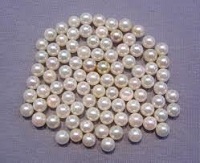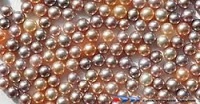Contents
Difference between Freshwater and Saltwater Pearls
Pearls are produced in both freshwater and saltwater, but the difference between freshwater and saltwater pearls is astounding. Usually, the saltwater variety of pearls is of better quality and is also more expensive than pearls found in freshwater; however, the choice between freshwater and saltwater pearls is completely personal.

For starters, pearls are made from shellfish. When an irritant, such as a piece of sand, invades the delicate lining of the creature, it secretes a smooth substance to coat the irritant, thus creating a pearl. Saltwater and freshwater pearls are both made in the same fashion. This substance, known as nacre or mother of pearl, slowly builds up the irritant until a pearl is formed.
The main difference between saltwater pearls and freshwater pearls is the type of creature that produces these natural gemstones. Saltwater pearls are produced by oysters that inhabit the seas and oceans. In days past, the only way to harvest saltwater pearls was to dive to tremendous depths to recover the oysters. Today, these oysters are grown on farms, but the pearls produced are of supremely high quality.

Freshwater pearls are produced by mussels that burrow in the sandy bottoms of rivers, lakes, and streams. Like saltwater pearls, the mussels that produce freshwater pearls are also farmed. In most places, “hunting” mussels to harvest their pearls is illegal due to the havoc it can cause on the ecosystem.
One can immediately tell the difference between freshwater and saltwater pearls by their appearance. Whereas saltwater pearls are—or should be—completely round, freshwater pearls have a lumpy, potato-like shape. Usually, freshwater pearls are described as off-round, egg, or Baroque, and come with a more affordable price tag due to their irregular shape.
The colours of freshwater pearls encompass the entire rainbow. While saltwater pearls come in a wide array of colours, freshwater pearls usually take on the hue of the mussel’s shell. Freshwater pearls can range from the traditional white, cream, and pink to more unusual shades like lavender and copper. Although these latter colours tend to raise the price of freshwater pearls, the colour of choice is purely at the whim of the buyer.
Many potential pearl buyers have the common misconception that the freshwater pearl is not “real.” This is completely untrue, as both the freshwater and the saltwater pearls are equally authentic. The choice between the two depends on the tastes and the budget of the wearer. Some individuals enjoy the irregular Baroque shapes and special colours of the freshwater, whereas others want the classic white round offerings of the saltwater pearl.
